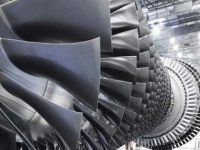In order to guarantee the longevity and optimal performance of HPC cluster cooling systems, it is necessary to conduct a variety of tests on coolants to assess their cleanliness, efficacy, and chemical stability. Quarterly testing is frequently advised in high-demand environments, such as data centers, but the frequency of testing hinges on the manufacturer's recommendations…
Read more
High Performance Server Coolant Health Testing: Types of Coolants
The formulation of coolant in high performance servers differs depending on the cooling method and specific requirements; however, these coolants are typically classified into two categories. Water-Based Coolants: Closed-Loop systems frequently employ these types of coolants, which are a combination of water and other compounds. These coolants are favored for their safety and high thermal…
Read more
Data Center Coolant Testing: Is it is Necessary?
Yes. The optimal performance and longevity of any data center cooling system are contingent on the maintenance and monitoring of the data center coolant. Reasons testing should be conducted on a regular basis, include: Additive Depletion: In order to prevent corrosion and improve thermal conductivity, the majority of coolants contain additives. The coolant's protective and…
Read more
Used Oil Testing for Wind Turbines by Eurofins TestOil

Wind turbines are often subject to brutal forces, extreme rotational speeds, and unpredictable conditions. Because of this, optimal lubricant condition is essential for reliable functioning; making lubricant analysis necessary to ensure reliable operation, minimize downtime, and extend the life of critical components. WEAR OF KEY COMPONENTSThe wind turbine gearbox is generally considered the most important…
Read more
Oil Analysis Alarm Limits: Trending v. Static
Oil Analysis Alarm Limits: Trending v. Static https://youtu.be/zuAalR8LXbg At TestOil, we know that machine conditions are always top of mind for our reliability professionals out there. Today, we are talking about the difference between static alarm limits and trending alarm limits in oil analysis. Static Alarm Limits As the name suggests, a static alarm limit…
Read more
Oil Analysis for Turbines: Eurofins TestOil Offers this Essential Test

Although turbine oil could last for more than a decade, it can start degrading long before that. Given this and because oil is the lifeblood of turbines, regular testing is important. While monthly oil analysis delivers a basic view of the oil’s condition, there are additional tests that should be performed annually to monitor key performance…
Read more

